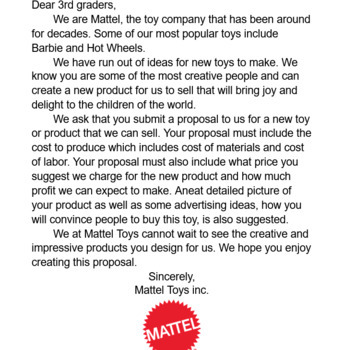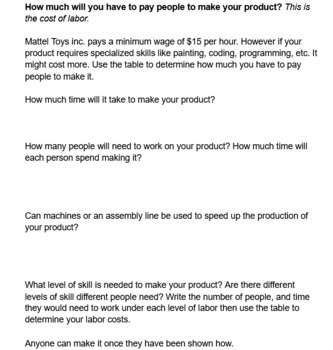Product Proposal Project Based Learning

Description
This is a project based learning math extension I designed for my group of third graders that are above grade level in math.
The premise is that a toy company is searching for new product proposals from kids.
Students design a toy and then use math to calculate the cost it would take to produce it, both the labour cost and the cost of materials. Students set a price and calculate profit.
Not only does this teach and extend math skills in a real-world context it also teaches students economics, and business. Students also get practice with their writing skills by writing to put together their proposal. It integrates so much. The graphic organizer(s) provide structure and scaffolds for students to be successful. Also an opportunity to teach vocabulary of tier two words like the labor product, labor, profit, etc.





